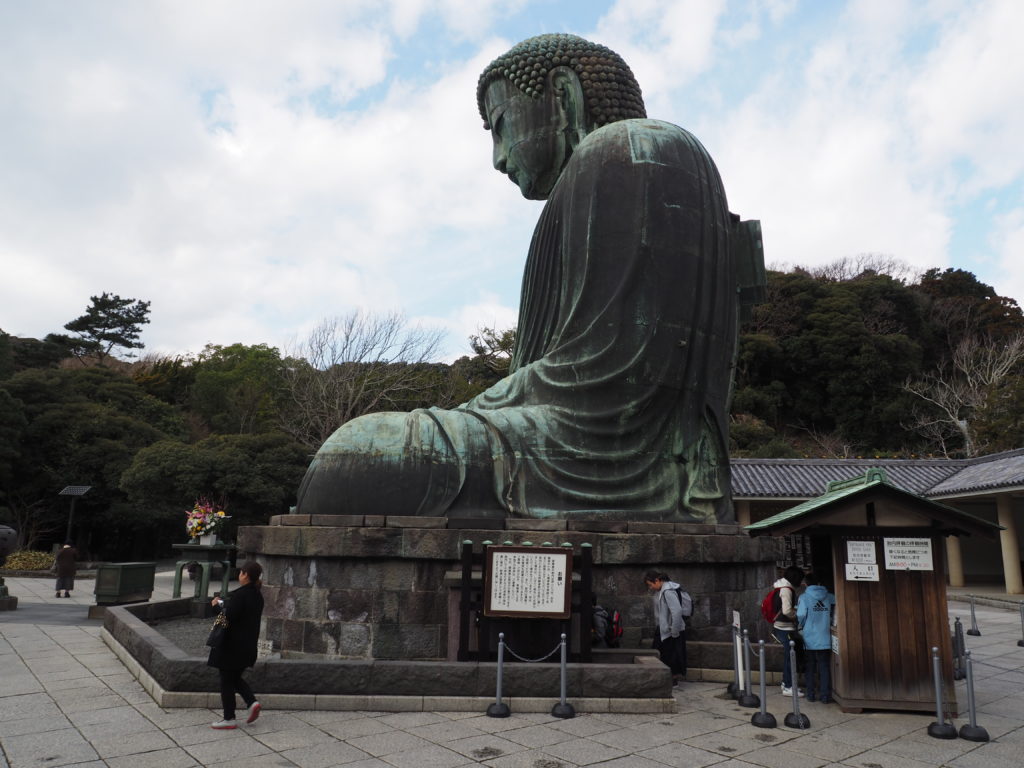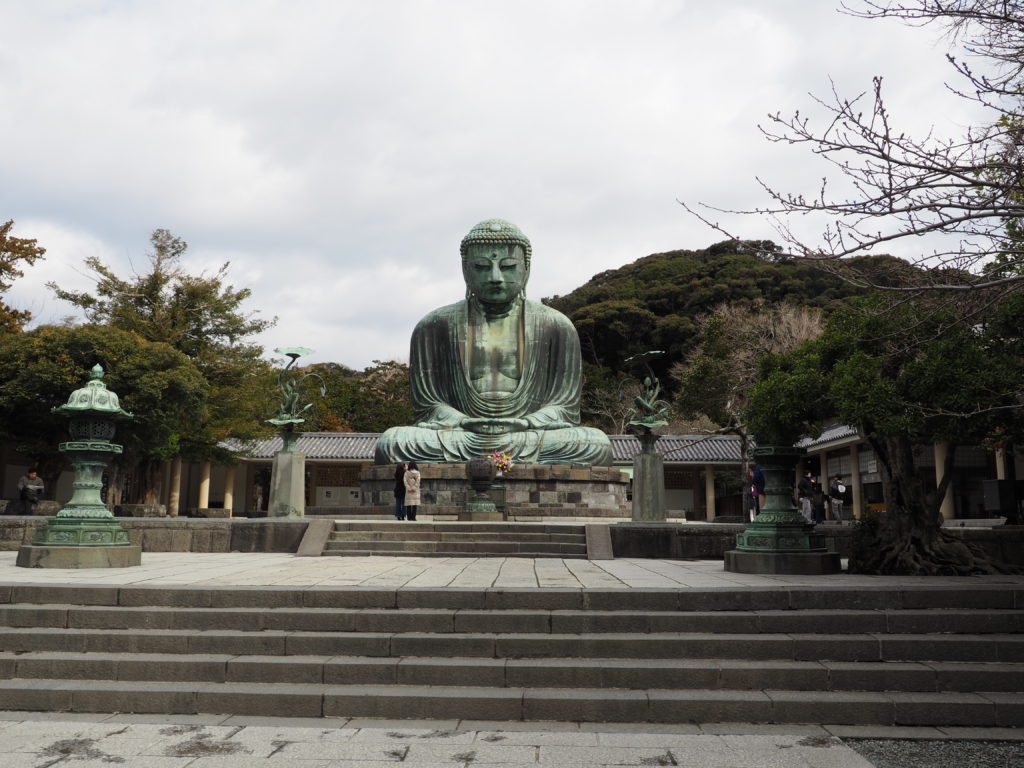DAIBUTSU = GREAT BUDDHA
Kamakura – how romantic this name sounds… In my mind it has always been connected with samurai, shoguns and with the Buddha statue. I have seen the Buddha statue in the Daibutsuden = the Hall of the Great Buddha in Nara, in the past. Nara statue was completed in the middle of the 8th Century and is almost 15 meters tall. Kamakura Buddha is a bit younger and a bit smaller 🙂 but it has always been on my wish list.
How glad I am to be finally able to visit the Kótoku-in Temple in Kamakura where the Great Buddha is sitting peacefully in the middle of the temple grounds. This Great Buddha is practically a symbol of Kamakura.
Buddha is depicted in a seated meditative pose = Amida Butsu = Amitábha Buddha, sitting in Lotus Position.
Amitábha – amida = infinite, without bound, ábhá = light, splendor, thus “he who posesses light without bound, he whose splendor is unfinite” – The Buddha of Immesurable life and light = Buddha of infinite life. In Japanese also called Amida Nyórai. Many new Buddhist sects were established in Japan during the Kamakura Period (1185-1333), the most important among them being Jodo-shu – the Pure Land Sect. Sacred Amitábha is its main Buddha. And this giant Kamakura Buddha was constructed during the Kamakura Period, too.
Prayer to Amitabha is called Nembutsu. Nembutsu goes like this: “Namu Amida Butsu” and it means: “Amida Buddha” May my emancipation be realized! “. If your repeat it, you will be saved after death by the boundless mercy of Amida. The philosophy is very simple. According to the belief that this world is an illusion and nobody and nothing lasts forever you just have to utter Nembutsu and you will be redeemed after death – you will be born in Pure Land after death. Pure land was created by Amitabha´s effort and it a land of happiness. Because of wars, diseases and poverty of those times, the society was unstable and these ideas appealed to people.
Preceding this present day Daibutsu there was a giant wooden statue of Buddha which took ten years to complete. However, it survived five years only, as it was destroyed in a storm. That is why a new Buddha was made in 1252 and this time it was cast of bronze. The statue itself is 11.31 m tall and it is understandable that it could not be cast in one piece. In fact it had to be cast in 30 separate stages. Total height including the pedestal is 13.35 m. Knee to knee distance is 9.10 m. No wonder that it weighs around 121 tons.
Inner hollow of the statue can be entered. I do not hesitate and take this opportunity. It is really interesting to explore it from the inside.
It was originally covered with gold leaf and sat indoors in a vast wooden hall – but the hall which housed it was destroyed twice by strong winds in 1334 and in 1369. Eventually a 15th Century earthquake and tsunami destroyed the building and it was not rebuilt ever since. But it is wonderful that the statue essentially, even 765 years after its construction, retains its original form and as such it is an invaluable example of Japanese historical Buddhist art.
It is the only monument in Kamakura designated as a National Treasure by the Japanese government. A National Treasure (kokuhó) is the most precious of Japan´s Tangible Cultural Properties







